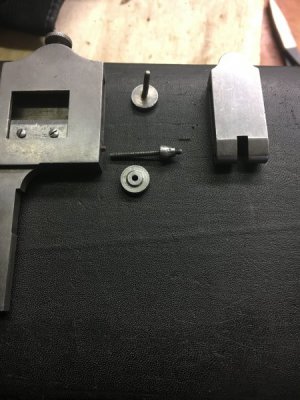I recently acquired a old brown and sharp vernier height gauge. The height adjustment screw mechanism has a hourglass shape in the threads from use. When the threaded adjustment nut gets to that point it will skip threads if any pressure is applied. Also the thumb screws have bends in them which look terrible.

While trying to remove the threaded rod adjustment from the height gauge arm the thread spun off and broke.
Now I think I can bore out the piece in the arm and rethread without to much hassle. But my thread gauges don’t go that small/fine of a thread. The smallest screws I have are 4-40. I would like to make all new hardware for the gauge.
So my questions are can you buy threaded rod and screws in these miniature sizes? Where?
Do you need miniature tooling to cut these threads?
Does a typical modern lathe have the capacity to cut these threads?
Are procedures the same as normal size threads?
Any info or tips on cutting miniature threads would be appreciated.

While trying to remove the threaded rod adjustment from the height gauge arm the thread spun off and broke.
Now I think I can bore out the piece in the arm and rethread without to much hassle. But my thread gauges don’t go that small/fine of a thread. The smallest screws I have are 4-40. I would like to make all new hardware for the gauge.
So my questions are can you buy threaded rod and screws in these miniature sizes? Where?
Do you need miniature tooling to cut these threads?
Does a typical modern lathe have the capacity to cut these threads?
Are procedures the same as normal size threads?
Any info or tips on cutting miniature threads would be appreciated.


